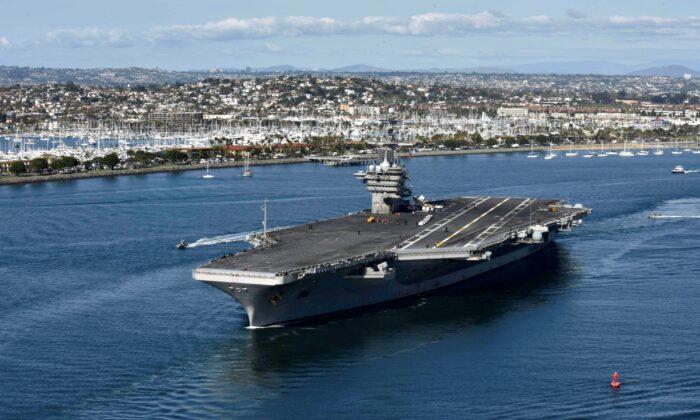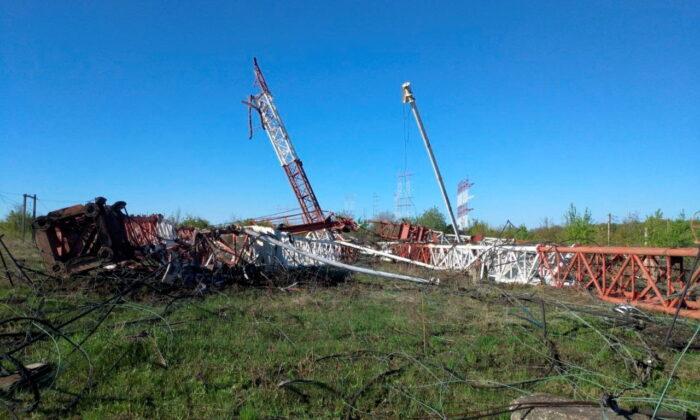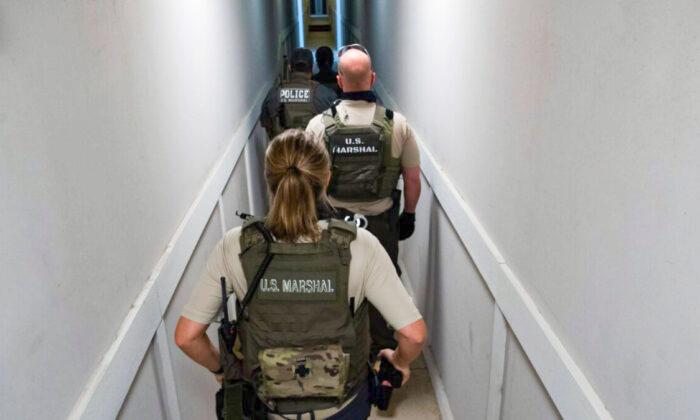A U.S. Navy carrier strike group carrying F-35C stealth fighters has entered the South China Sea for the first time during its current deployment and is conducting “maritime security operations,” officials said on Tuesday.
The operations in the South China Sea are part of the U.S. Navy’s routine presence in the Indo-Pacific, officials said, noting that the strike group is deployed to the U.S. 7th Fleet area of operations “in support of a free and open Indo-Pacific region.”
“The freedom of all nations to navigate in international waters is important, and especially vital in the South China Sea, where nearly a third of global maritime trade transits each year,” said Rear Adm. Dan Martin, commander of the Carl Vinson Carrier Strike Group, in a statement. “It is in all of our interest that the international community plays an active role in preserving the rules-based international order.”
F-35C stealth fighters are designed to operate explicitly on U.S. Navy carriers. Its configuration, embedded sensors, internal fuel, and weapons capacity allow pilots to evade enemy detection.
China’s hawkish state-run media Global Times called the arrival of the Nimitz-class aircraft carrier in the disputed seas a “provocative deployment” and said that the Chinese People’s Liberation Army (PLA) Southern Theater Command is on high alert.
The spokesman for the PLA Southern Theater Command, Air Force Senior Col. Tian Junli, accused the U.S. Navy of violating China’s sovereignty and security.
“The United States will continue to fly, sail, and operate wherever international law allows, as USS Benfold did here,” the U.S. 7th Fleet said in a statement. “Nothing [the People’s Republic of China] says otherwise will deter us.”
China has tried to forcibly deny other countries in the region from accessing the rich fishing grounds in the disputed sea. Brunei, Malaysia, the Philippines, Taiwan, and Vietnam all face territorial disputes with China in the South China Sea.
“We need to find ways to pressure and raise the pressure, frankly, on Beijing to abide by the United Nations Convention on the Law of the Sea and to challenge its bullying and excessive maritime claims,” Harris said, adding that the United States would “maintain a strong presence in the South China Sea” to confront China.





